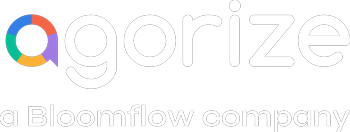Innovation managers know the challenge: How do you harness diverse perspectives to drive forward-thinking solutions within a large organization? One powerful approach is using an open innovation platform, which can transform how companies develop diversity and inclusion.
An open innovation platform connects diverse voices inside and outside a company, providing a space for collaboration that encourages varied viewpoints. This approach isn’t just about having different people in the room; it’s about actively involving them in problem-solving and decision-making processes.
Internal programs to promote diversity and inclusion
Companies can create internal programs where employees across different departments and levels participate in innovation challenges. Imagine a company that invites all employees to propose ideas for improving workplace accessibility. Over a set period of time, they could receive a range of submissions, from software tools to redesigns of physical spaces.
A cross-functional team might suggest a virtual reality tool for remote accessibility training, which could be implemented company-wide. This type of initiative not only sparks innovative ideas but also builds an inclusive culture by giving employees a platform to contribute to the organization’s development, regardless of their role or background.
External collaborations to enhance diverse input
Engaging external partners such as universities, startups, and nonprofits can also yield fresh ideas and diverse perspectives. For instance, companies can collaborate with universities to address sustainability challenges, setting up an open innovation platform to solicit ideas. Hundreds of entries from students around the world could offer unique solutions. This approach not only fosters diversity by bringing together participants from varied backgrounds but also leads to innovative solutions that can be implemented, benefiting both the company and society.
Open calls to the public for broader diversity
Opening innovation challenges to the public can be another powerful strategy. Companies focused can invite the public to share ideas on enhancing processes, products, or experiences. The response could include hundreds of submissions with innovative suggestions. Implementing some of these ideas could lead to a noticeable improvement in healthcare processes. Public engagement not only introduces new perspectives but also strengthens community connections by involving more voices in the innovation process.

Important KPIs for diversity and inclusion in innovation programs
To measure the success of diversity and inclusion initiatives, companies need to identify key performance indicators (KPIs) that reflect both diversity and innovation goals. Some of the most important KPIs for diversity and inclusion programs include:
- Employee engagement levels: A diverse and inclusive environment often leads to higher engagement, as employees feel valued and heard. Tracking engagement through surveys and participation rates in innovation programs can provide insights into the effectiveness of inclusion efforts.
- Retention rates: High retention rates can indicate a positive workplace culture where diversity and inclusion are prioritized. Monitoring these rates can help companies understand the long-term impact of their diversity initiatives.
- Diversity of participants: Tracking the demographic diversity of participants in innovation programs helps ensure that a wide range of voices and perspectives are included. This can be measured by analyzing the background, department, or level within the organization of those contributing ideas.
- Innovation outcomes: The number and quality of ideas generated, as well as the implementation rate of these ideas, can be tied back to the diversity of the teams involved. This helps demonstrate the direct impact of diverse teams on innovation success.
Combining these KPIs with those related to innovation programs, such as the speed of idea development and implementation, the cost savings from new solutions, or the revenue generated by innovative products, provides a comprehensive picture of how diversity and inclusion efforts contribute to the organization’s overall innovation goals.
Conclusion
Using open innovation platforms to advance diversity and inclusion is a powerful strategy for any organization looking to foster creativity and develop more meaningful solutions. By bringing together diverse voices, whether from within the company, external partners, or the public, companies not only tap into a wider range of ideas but also build a culture where everyone feels valued and included.
The benefits are clear: diverse teams drive innovation, and inclusive environments enhance employee engagement and satisfaction. When organizations prioritize these principles, they create a cycle of continuous improvement and innovation, proving that diversity and inclusion are not just buzzwords but key drivers of success in today’s competitive landscape.










